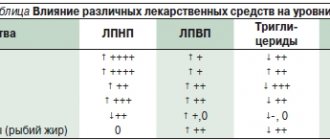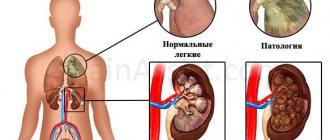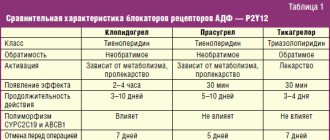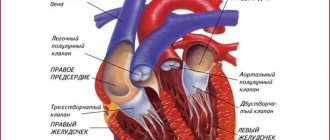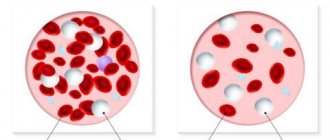We all need protection to one degree or another. External and internal. The body and mind are quite fragile and can be strengthened and supported in different ways. Even with medication.
If a person experiences negative effects (stress, shock, ischemia, intoxication, cerebrovascular accident, etc.), then the doctor may prescribe Mexidol.
Mexidol is a good helper in the fight against stress
Operating principle
The drug belongs to the group of heteroaromatic antioxidants and basically contains ethylmethylhydroxypyridine succinate, which in turn protects cell membrane lipids and reduces the level of free radicals in the body. This significantly expands the spectrum of pharmacological action. Mexidol has an antihypoxic (saturates the blood with oxygen), anti-stress, anticonvulsant effect. It also has nootropic properties, prevents and reduces memory impairment, increases concentration and performance, and reduces the manifestation of alcohol intoxication. Restores the sleep-wake cycle, improves the metabolism of brain tissue and their blood supply, improves microcirculation and rheological properties of blood (its fluidity), reduces the rate of dystrophic and morphological changes in the brain. It has a pronounced therapeutic effect in the treatment of Parkinson's disease. Mexidol improves the functional state of ischemic myocardium and the adaptive capabilities of the human body when exposed to various stress factors.
Mexidol also increases the content of dopamine, the so-called “hormone of joy”, in the brain.
Indications
In neurology, Mexidol is used in the following cases:
- acute cerebral circulatory disorders and discirculatory encephalopathy (otherwise – cerebral atherosclerosis);
- after transient ischemic attacks, in the subcompensation phase as preventive courses;
- vegetative-vascular dystonia;
- cognitive problems of atherosclerotic origin (impaired speech, memory, attention, intelligence and other symptoms associated with the development of atherosclerosis).
In psychiatry Mexidol is prescribed:
- to relieve withdrawal symptoms (otherwise known as withdrawal) due to alcohol and drug addiction;
- in case of intoxication with neuroleptics (drugs intended for the treatment of psychosis);
- to alleviate the impact of extreme (stress) factors;
- for anxiety disorders and neurotic and neurosis-like conditions.
Mexidol is also used for acute purulent-inflammatory processes of the peritoneum (necrotizing pancreatitis and peritonitis) as part of a complex of therapeutic treatments.
Side effects
One of the side effects after taking Mexidol may be nausea
Despite the body’s positive reaction to taking Mexidol and its low toxicity, the medicine still has side effects.
- from the cardiovascular system: increased blood pressure, decreased blood pressure;
- from the nervous system: drowsiness, difficulty falling asleep, anxiety, emotional reactivity, headache, loss of coordination;
- from the gastrointestinal tract: nausea, dry mouth;
- from the immune system: allergic reactions, including hyperemia, skin rash, itching;
- others: distal hyperhidrosis.
What it is
These are drugs that improve performance, memory and learning ability. Piracetam was created first - it appeared in the sixties of the last century. In the seventies, scientist Corneliu Giurgia discovered that this medicine stabilizes the membranes of cells in the central nervous system, improving the functioning of brain cells. They didn’t know the exact mechanism of how piracetam works—they were just guessing. Giurja proposed using it to restore mental abilities after injuries, oxygen starvation of the brain, with senile dementia and congenital dementia in children.
Most nootropics are of animal origin. They are extracted from the brains of pigs and cattle, rich in low molecular weight proteins. The drugs are inexpensive and rarely cause side effects, which is why doctors love them.
How to take Mexidol?
Mexidol in tablet form is taken orally. The tablet is not chewed or divided in half. You should drink it with plenty of water. Eating does not have any effect on the activity of the medication, so you can take Mexidol before, during or after meals.
The injection form is used for intramuscular injections or intravenous infusions (stream or drip). Before giving the injection, the drug is diluted in a 0.9% sodium chloride solution. It is injected slowly in a stream over 5 - 7 minutes, drip - at a rate of 40 - 60 drops per minute. The maximum daily dose for tablets is 800 mg, for injections - 1200 mg. Course therapy is canceled gradually, after achieving a stable clinical and laboratory effect.
Mexidol solution for intravenous administration
Please note that drowsiness may occur after taking Mexidol, so you should be careful while driving, as well as when engaging in other potentially dangerous activities.
| Disease | Course duration | Dosage* |
| Acute cerebrovascular accident (ACVA) | Initially within 10-14 days | 200-500 mg (i.v. drip) 2 to 4 times/day, then for another 14 days 200-250 mg (i.m.) several times/day |
| Encephalopathy | Initially within 2 weeks | See ONMK |
| Mild cognitive impairment | Course from 2 weeks to a month | 100-300 mg/day (i.m.) |
| Withdrawal syndrome | 5 to 7 days | 200-250 mg/day (iv drip or intramuscular injection) 2 - 3 times/day |
| Antipsychotic drug poisoning | Course in 7-14 days | From 200 to 500 mg/day (iv) |
| Acute edematous (interstitial) pancreatitis | 200-500 mg (iv drip and intramuscular injection) 3 times a day | |
| Necrotizing pancreatitis (mild) | 100-300 mg/day (iv drip and intramuscular injection 3 times/day | |
| Necrotizing pancreatitis (moderate) | 200 mg (iv) 3 times/day | |
| Necrotizing pancreatitis (severe) | In a pulse dosage of 800 mg on the first day, with a double dose regimen. Then 200 - 500 mg 2 times a day with a gradual reduction in the daily dose. | |
| Necrotizing pancreatitis (extremely severe) | From 800 mg/day to relieve shock. Next, 300 - 500 mg (iv drip) 2 times a day with a gradual reduction in the daily dosage. | |
| Open-angle glaucoma of various stages | Course 14 days | IM 100 - 300 mg/day, 1 - 3 times/day |
| Traumatic brain injury and consequences of traumatic brain injury | Within 10 -15 days | IV drip 200 - 500 mg 2 - 4 times / day |
*When taking pills. The method of administering the Mexidol injection in the same dosage is indicated in parentheses.
The duration of therapy for patients with coronary heart disease is at least 1.5-2 months. It is advisable to carry out repeated courses (on the recommendation of a doctor) in the spring and autumn.
In case of acute myocardial infarction, as part of complex therapy, it is administered intravenously (the first 5 days) and intramuscularly (the next 9 days) for 14 days against the background of traditional therapy for myocardial infarction, including nitrates, beta-blockers, angiotensin-converting enzyme (ACE) inhibitors, thrombolytics, anticoagulants and antiplatelet agents, as well as symptomatic agents according to indications.
Ethylmethylhydroxypyridine succinate (Mexidol) was synthesized at the Institute of Biochemical Physics. N.M. Emanuel RAS, studied and developed at the Research Institute of Pharmacology of the Russian Academy of Medical Sciences and the All-Union Scientific Center for the Safety of Biologically Active Substances [1]. The drug has a wide range of pharmacological effects, realized at least at two levels - neuronal and vascular. Thus, Mexidol has antioxidant [2], antihypoxic, anxiolytic [3], antistress, antialcohol [4], anticonvulsant, neuroprotective, nootropic, mnestic, neuropsychotropic, cardioprotective, antiatherosclerotic, antiplatelet, antiparkinsonian, vegetotropic effects [5].
As a result of chemoreactomic modeling of Mexidol, it was revealed [6] that this molecule can exhibit a complex neuroprotective effect due to both direct effects on neurons (activation of acetylcholine and GABA-A receptors, anti-inflammatory, antioxidant effects) and indirect effects (normalization of blood coagulation, antidiabetic and antiatherogenic effects). Indeed, Mexidol is able to modulate receptor complexes of brain membranes, in particular benzodiazepine, GABA, and acetylcholine, enhancing their ability to bind to specific ligands and increasing the concentration of dopamine in the brain [7].
Clinical studies [8–10] have shown a significant therapeutic effect of Mexidol in the treatment of neurological, mental and cardiovascular diseases. Thus, the drug has shown effectiveness in the treatment of neurotic and neurosis-like disorders, various conditions in alcoholism, including withdrawal syndrome, as well as acute and chronic disorders of cerebral circulation (stroke, discirculatory encephalopathy, vegetative-vascular dystonia), disorders of brain function during aging and atherosclerosis.
A significant advantage of Mexidol is its wide spectrum of pharmacological action, low toxicity, virtual absence of side effects (typical, for example, of some “standard” neuropsychotropic drugs), sedative, muscle relaxant, stimulating and euphoric effects [9].
This paper presents the results of a systematic analysis of the clinical use of Mexidol in neurological practice in adults. In the eLibrary and PubMed publication databases, 3624 articles on the study of ethylmethylhydroxypyridine succinate and Mexidol and 507 publications using the keyword “Mexidol” were found. Of these, 52 representative studies of the use of Mexidol in various areas of neurological practice in adults were identified. Data from a systematic analysis indicate the importance of using Mexidol to influence the pathogenetic factors of cerebral ischemia; in the therapy and rehabilitation of patients with cerebral ischemia; in vascular surgery; in the therapy and rehabilitation of patients with degenerative-dystrophic changes in the spine; in the treatment of neurodegenerative diseases, neuropathies caused by metabolic disorders (diabetes, hypothyroidism) and/or infectious diseases, as well as neuropsychological and autonomic disorders.
Effect of Mexidol on pathogenetic factors of cerebral ischemia
The drug affects such important factors in the pathogenesis of cerebral ischemia as hypoxia, high blood pressure (BP), atherosclerosis and chronic inflammation. Complex chemoreactomic modeling of the pharmacological effects of Mexidol in comparison with control molecules (choline alfoscerate, piracetam, glycine, Semax) showed that Mexidol can exhibit acetylcholinergic, GABAergic, anti-inflammatory, neuroprotective and neurotrophic, anticoagulant, hypoglycemic and hypolipidemic properties [6, 11], which counteract pathogenetic factors of cerebral ischemia. Mexidol is distinguished from comparison molecules by a more pronounced safety profile (lesser effects on serotonin, dopamine and adrenergic receptors, lesser degree of interaction with cardiac potassium channels, monoamine oxidase enzymes and cytochromes P450) (see figure).
Chemoreactomic analysis: the main molecular mechanisms of action of Mexidol [6]. COX-2 - cyclooxygenase-2; 5-LOG - 5-lipoxygenase.
The antihypoxic effect of Mexidol is associated with the preservation of red blood cells and stimulation of mitochondrial metabolism. A single dose of the drug (100 mg/kg) before acute stress prevented a decrease in the level of iron in the blood serum [12], which indicates that Mexidol increased the preservation of the structure of erythrocytes. The use of Mexidol in a model of acute hypoxia in rats [13] increased the antioxidant resource of the blood and the stability of mitochondria. The combined use of the arginase inhibitor L-norvaline and Mexidol had a pronounced endothelial-protective effect on the model of nitric oxide (NO) deficiency, which was expressed in an increase in the production of nitric oxide and endothelium-dependent vasodilation [14]. Due to its antiatherogenic effect, Mexidol is able to inhibit the development of hyperlipidemia, lipid peroxidation, and increase the antioxidant resource of plasma, thereby inhibiting atherogenesis [15]. The anti-inflammatory and anticoagulant effect of Mexidol is probably associated with modulation of prostaglandin metabolism [16].
Clinical studies have confirmed the prospects of using Mexidol for arterial hypertension (AH), which is a recognized risk factor for cerebrovascular pathology (WHO, 2011). It is well known that the selection of the most appropriate pharmacotherapy for hypertension, especially in elderly patients, remains an urgent problem, since “standard” therapy for hypertension is based on the use of diuretics, β-blockers, calcium channel antagonists and is associated with a whole range of undesirable side effects.
Mexidol demonstrated antihypertensive properties both during monotherapy and in combination with antihypertensive drugs. The results of a study [17], including men with moderate hypertension working in the Far North, who received Mexidol monotherapy for 2 weeks, showed the antihypertensive properties of the drug, as well as an improvement in the structural and functional state of erythrocytes. In another study [18], patients taking antihypertensive therapy in combination with Mexidol, during treatment, noted faster relief of headaches, dizziness, absence of weakness in the legs, increased exercise tolerance, improved memory and concentration compared to the control group. The hypotensive effect of Mexidol was established [19] in the treatment of young patients with stage I-II hypertension: when Mexidol was used in combination with bisoprolol, more effective correction of blood pressure was observed.
When Mexidol was included in combination therapy for patients with uncomplicated hypertensive crises [20], by the 7th day of treatment, blood pressure returned to normal, headaches and dizziness decreased significantly, and sleep improved.
Mexidol helped reduce depressive symptoms against the background of hypertension. In patients with hypertension and moderate anxiety disorders, the drug had a tranquilizing effect comparable in severity to Grandaxin. The anxiolytic effect of Mexidol was not accompanied by muscle relaxation, did not affect the speed and speed of reaction, and did not cause dependence [21].
The antiatherogenic effects of Mexidol have also been confirmed in clinical practice. In a study [22] of patients over 60 years of age with stage II-III hypertension, its hypolipidemic effect was noted (decreasing the levels of total cholesterol, low-density lipoproteins and increasing the concentration of high-density lipoproteins).
When performing surgical interventions under artificial circulation, Mexidol contributed to a decrease in the systemic inflammatory response, which was manifested by an increase in the concentrations of C-reactive protein (CRP), proinflammatory cytokines: tumor necrosis factor (TNF-α), interleukins (IL-6 and IL-8), as well as leukocytosis, increased erythrocyte sedimentation rate and other markers of inflammation. Lower concentrations of alanine aminotransferase, aspartate aminotransferase, γ-glutamyl transpeptidase, lactate dehydrogenase, creatine phosphogenase and myoglobin in the blood serum of patients receiving Mexidol indicated the organoprotective effect of the drug [23]. These observations suggest that Mexidol may reduce the incidence of neurological complications after operations performed under conditions of artificial circulation.
Ischemic diseases of the brain and Mexidol
The results of fundamental research [10] showed that Mexidol significantly increases local cerebral blood flow in conditions of global cerebral ischemia. The cerebrovascular mechanism of action of the drug is due, in particular, to its effect on the GABA-A receptors of cerebral vessels, since the improvement in blood flow is almost completely neutralized by the combined use of Mexidol and the GABA-A receptor inhibitor bicuculline [24].
Clinical studies have revealed the effectiveness of Mexidol in intensive therapy of acute severe ischemic stroke [8, 25], which is associated with its antihypoxic, neuroprotective and adaptogenic effects. The drug reduced the progression of ischemic penumbra and improved patient scores on the National Institutes of Health Stroke Scale (
National Institutes of Health Stroke Scale - NIHSS) and the Barthel index [26], contributed to the correction of the lipid spectrum and stabilization of hemostasis indicators [27], including in patients with ischemic stroke and type 2 diabetes mellitus [28], and showed its significance in the rehabilitation of patients after stroke [29].
The use of Mexidol in the complex treatment of ischemic stroke in the acute period [30] led to a significant improvement in cognitive, motor, and sensory functions, a decrease in fatigue, anxiety, and improved adaptation to physical activity, assessed using the NIHSS scale, the modified Rankin scale (mRS), and the Hamilton scale. The use of the drug in the complex treatment of patients with the consequences of ischemic cerebrovascular accidents [31] contributed to the regression of neurological symptoms, an increase in the speed of mental reactions, an improvement in speech activity, a decrease in the level of anxiety and an increase in the quality of life of patients.
A randomized, double-blind, placebo-controlled study [32] studying the effectiveness and safety of Mexidol in complex therapy in the acute period of ischemic stroke revealed significant advanced dynamics in the regression of neurological disorders according to the NIHSS scale by the 14th day of the disease compared with the placebo group ( p
<0.05), as well as significant functional recovery on the 21st day (
p
<0.05) in patients included in the study in the first 6 hours of the disease.
Carrying out thrombolytic therapy in combination with the use of Mexidol leads to a significantly faster reduction in the severity of neurological deficit and somatic complications. This combination creates conditions not only for the restoration of neurological functions, but also for the prevention of secondary brain damage reactions [33].
Mexidol therapy [34] improved well-being, memory and mnestic functions, and reduced the level of depression in the recovery period of ischemic stroke in the internal carotid artery system in elderly patients. Before treatment, patients complained of headaches, dizziness, and fatigue. During treatment, the intensity and number of complaints significantly decreased (headache, dizziness, staggering when walking, hearing loss, noise in the head, fatigue, irritability, emotional lability, weather sensitivity, memory loss, sleep disturbance), there was an expansion in the range of social and everyday activities, which indicated the activation of metabolic processes in the brain.
The effectiveness and safety of long-term sequential therapy with Mexidol in patients with hemispheric ischemic stroke in the acute and early recovery periods has been demonstrated. The randomized, double-blind, multicenter, placebo-controlled, parallel-group study EPIKA [35] included 150 patients aged 40 to 79 years, who were divided into two groups using simple randomization: patients in group 1 received therapy with Mexidol 500 mg/day. daily intravenous drip for 10 days, followed by taking 1 tablet (125 mg) 3 times a day for 8 weeks, patients of the 2nd group received placebo according to a similar regimen. At the end of therapy, the average mRS score was lower in group 1 than in group 2 ( p
=0.04).
The dynamics of the decrease in the average score on the mRS (visits 1–5) was more pronounced in group 1 ( p
= 0.023).
The proportion of patients who achieved recovery corresponding to 0-2 points according to mRS (5th visit) was significantly higher in group 1 ( p
= 0.039).
When tested on the NIHSS scale at the 5th visit, the mean value was lower in group 1 ( p
= 0.035).
The decrease in NIHSS score at the end of the course of therapy relative to the initial level in patients with diabetes mellitus was more pronounced in group 1 ( p
= 0.038).
In group 1, in the general population of patients and the subpopulation of patients with diabetes mellitus, the dynamics of improvement in quality of life were more significant and were observed from the 2nd visit. The proportion of patients who had no problems with movement in space was significantly higher in group 1 ( p
= 0.022).
Mexidol in the treatment of chronic cerebral ischemia
Mexidol helps to increase the survival of neurons both in acute ischemia and in conditions of chronic cerebral ischemia (CCI). The results [36] of experimental validation of the direct neuroprotective effect of Mexidol on a model of glutamate stress on cerebellar granule neurons in cell culture are presented. It has been shown that when combined with glutamate (model of acute ischemia), Mexidol significantly increases the survival of neurons (by 8-10% compared to the control). The effect of Mexidol was even more pronounced when it was added at the stage of growing a neuron culture (5-7 days, model of chronic ischemia) [36]: cell survival under conditions of glutamate stress increased by an average of 20%.
Clinical studies [37] have revealed the promise of using Mexidol to reduce the manifestations of asthenic syndrome, psychoemotional disorders and cochleovestibular disorders in patients with CCI. Mexidol helped reduce insulin resistance, hypertriglyceridemia, and hyperglycemia in patients with cerebrovascular diseases and metabolic syndrome [38]. The results of a study [39] involving 45 patients with moderate and severe CCI showed a higher effectiveness of treatment with Mexidol compared to the control group. In patients treated with the drug, the severity of motor activity disorders significantly decreased, the state indicators on the quality of life scale (SF-36) were normalized, and there was a significant improvement in the assessment of cognitive functions on the Mini-Mental State Examination (MMSE).
It is interesting to note that the available data from fundamental research indicate a geroprotective effect of Mexidol in conditions of cerebral ischemia. Thus, the results of a geronto-informational study of Mexidol [40] demonstrate the high potential of Mexidol as a geroprotector. The drug is characterized by a maximum set of positive properties (treatment of diseases of the central nervous system, cardiovascular pathology, metabolic disorders, anti-inflammatory and anti-infective effects, etc.). Mexidol and glycine are predicted to have the lowest frequency of side effects such as itching, constipation, paresthesia, vomiting, etc. A geronto-informational assessment of changes in the life expectancy of model organisms [41] showed that Mexidol helps to increase the average life expectancy of Caenorhabditis elegans
(by 22.7±10%), Drosophila (by 14.4±15%) and mice (by 14.6±3%, control preparations - no more than 6.1%). The use of Mexidol in the experiment prevented excessive accumulation of the aging marker lipofuscin in brain tissue after local permanent ischemia caused by ligation of the middle cerebral artery.
The best clinical effect was demonstrated with long-term continuous therapy with Mexidol: at the beginning of treatment, intravenous or intramuscular administration, followed by switching to tablet form. Compliance with such a regimen allows you to fully unlock the therapeutic potential of the drug and significantly increase the effectiveness of therapy [28, 35, 38, 39].
Considering the dose-dependent effect of Mexidol, in the treatment of comorbid vascular diseases, a sequential regimen of the drug is recommended: 500-1000 mg/day intravenous drip daily for 15 days with a transition to a tablet form of 750 mg/day.
For ease of administration by patients with comorbid vascular diseases, the drug Mexidol FORTE 250 has been released with a double dosage, which allows you to take 3 tablets per day instead of 6 and thereby increases patient adherence to treatment [28]1.
The accumulated experience in the clinical use of Mexidol shows that it can be used in the complex treatment of patients with both acute and chronic cerebral circulatory failure against the background of standard therapy. A sequential scheme (at the beginning of treatment, an injection course, then a tablet course) of Mexidol in adequate dosages is also used in acute and long-term periods of traumatic brain injury, with post-hypoxic encephalopathies, epilepsy, polyneuropathies, asthenoneurotic syndromes, etc. Mexidol demonstrated a significant increase in the anti-ischemic effect compared with standard therapy.
Mexidol and vascular surgery
Carotid endarterectomy (CE) is recognized as the most successful method of preventing ischemic stroke in cases of significant stenosis of the carotid artery. The disadvantage of K.E. Elderly and senile patients have a high level of complications during and after surgery (24%), of which 60% develop during surgery. In a study [42], the use of Mexidol (1000 mg/day) as an antihypoxic accompaniment of CE in patients with stenosing atherosclerosis of the carotid artery with CCI significantly reduced the degree of brain hypoxia, shortened the operation time, improved the neurological status of patients and their performance of neuropsychological tests in the postoperative period .
The most pronounced effect of Mexidol therapy was a significant increase in the degree of brain oxygenation (regional oxygen saturation, rSO2). After a course of treatment with Mexidol, the average rSO2 value in the group was 60±5%, while in the control group it was significantly lower (48±6%). Moreover, in the control group, due to the need for constant correction of brain protection with anesthetic agents, the duration of the operation was 1.5-2 times longer. When using Mexidol, only in less than 5% of patients the readings of the rSO2 sensor on the operated side were less than the desired value (58%), which did not affect the results of CE. In the control group, rSO2 values decreased to 38-41% in a significant (21%) proportion of patients. Thus, antihypoxic protection of the brain with Mexidol can prevent the formation of critically low blood oxygenation, which can reduce surgery time and improve the neurological status of patients in the postoperative period [42].
Mexidol in the therapy and rehabilitation of patients with degenerative-dystrophic changes in the spine
Spondylogenic diseases of the nervous system are an urgent problem due to their widespread prevalence, persistent disability and the need to limit physical activity at a young age (up to 45 years). In particular, lumbosacral radiculopathies occupy a leading (70%) place among all diseases of the peripheral nervous system. Particular attention should be paid to discogenic lumbosacral radiculopathies, the most common in the structure of neurological diseases in terms of the severity of the process and the difficulty of rehabilitation [43]. The results of clinical studies [44, 45] showed that the use of Mexidol is very significant for the correction of CCI in patients with vertebrogenic pathology.
The use of Mexidol in complex rehabilitation of patients after surgical treatment of lumbosacral radiculopathy was associated with a pronounced analgesic effect of the drug [46]. In the postoperative period, clinical improvement was noted, which was expressed in a greater reduction in pain on the visual analogue scale (Mexidol group - up to 1.2±0.5 points, control group - only up to 2.3±0.6 points). Sensitive disorders regressed in 83% of patients by the 14th day of treatment with Mexidol (74% in the control group); revival of reduced reflexes when using Mexidol was observed in 93% of patients (73% in the control group) [46].
The effectiveness and safety of the use of Mexidol in the complex treatment of patients with osteochondrosis of different parts of the spine in the presence of compression of the nerve ending or vascular reaction has been shown [47]. Positive dynamics of symptoms of neuropathic pain (intensity, severity, stinging, tolerability) were noted. During the treatment period, there was no pain due to provocative positions of the neck, forced posture of the head and neck, sleeping on an uncomfortable pillow, jerking movements of the head, and driving a car in an uncomfortable position. Before treatment with Mexidol as part of complex therapy, these factors led to compression of nerve endings and pain.
Mexidol as part of complex therapy for vertebrogenic radiculoischemic syndrome significantly increased the effectiveness of treatment and was well tolerated by patients [48]. A total significant improvement in the patients' condition on the scales of general clinical impression and pain intensity was achieved in 74% of patients receiving Mexidol (47% in the control group).
The use of the drug significantly reduced the severity of pain and accelerated the restoration of the function of spinal roots and peripheral nerves in patients with lumbosacral radiculopathy [49]. When using Mexidol, the greatest rate of pain reduction occurred on the 10-20th day of treatment. By 25-30 days, the pain syndrome was completely relieved in more than 50% of patients; in the remaining patients, the pain became moderate, and the need for painkillers decreased.
The inclusion of Mexidol in the complex therapy of spondylogenic radiculoischemia [50] significantly improved regenerative processes in nervous tissue and reduced the intensity of pain. Sensitive disorders regressed by the 14th day of treatment in 34 (82.9%) patients in the main group and 26 (74.3%) in the control group. Revival of reduced reflexes was noted in 93% of patients in the main group and 73% in the control group. The effectiveness of treatment was evidenced by the regression of pain in the radicular syndrome and the absence of an increase in segmental neurological disorders.
The analgesic effect of Mexidol was confirmed not only by the visual analogue scale and other scales for assessing pain reactions, but also by electroneuromyography (ENMG). Thus, in a study [51], which included patients with neurovascular syndrome against the background of degenerative-dystrophic changes in the lumbosacral spine, with the addition of standard therapy with Mexidol, an improvement in ENMG indicators was noted: an increase in spectral power and amplitudes, which indicates an acceleration of regenerative processes.
Complex therapy of lumbosacral radiculopathies [52] with the inclusion of Mexidol revealed its analgesic effect, and ENMG data indicated an increase in the rate of remyelination of nerve fibers. The greatest rate of pain reduction occurred on the 10-20th day of treatment, and by the 25th-30th day, in more than 50% of patients the pain syndrome was completely relieved, in the rest it became moderate.
The results of ENMG [52] showed that when using Mexidol, a significant ( p
<0.05) compared with standard therapy, an increase in the amplitude of the M-response, a decrease in the latency of the F-wave, and an increase in the speed of impulse conduction. Compared with the control group, changes in amplitude-velocity parameters and an increase in F-wave latency were noted, which indicates an axonal demyelinating process in both the proximal and distal sections of the branches of the lumbosacral region.
On the prospects of using Mexidol in the treatment of multiple sclerosis
Mexidol, exhibiting antioxidant and anti-inflammatory effects and modulating the activity of GABAergic and cholinergic neurotransmissions, helps prevent neurodegenerative processes. The effectiveness of Mexidol in multiple sclerosis has been most fully studied.
Multiple sclerosis is a chronic progressive neurological disease, which is one of the main causes of persistent disability among young people of working age. Already in the early stages of multiple sclerosis, there is damage to the myelin sheaths of the nerve trunks and the nerve fibers themselves, leading to atrophy of the brain substance and loss of oligodendrogliocytes that synthesize myelin. In basic research, experimental allergic encephalomyelitis is considered the standard model of multiple sclerosis [53–55]. In guinea pigs with experimental allergic encephalomyelitis, Mexidol preserved the structure of mitochondria. In particular, preserved mitochondria were found in cerebellar neurons, which was not observed in the natural course of encephalomyelitis.
During the clinical use of Mexidol [54] in complex therapy of patients with multiple sclerosis, the most significant differences were identified in the Stoop test (assessing voluntary attention, flexibility of thinking, speed of information processing, ability to correctly perform assigned tasks) and data from questionnaires assessing depression and chronic fatigue.
After treatment with Mexidol [54], a decrease in the expression of pro-inflammatory toll receptors of the TLR4 type on monocytes was observed, which corresponds to the deactivation of monocytes and a decrease in their sensitivity to the heat shock protein HSP72, which has an activating effect on monocytes due to the activation of TLR4 receptors. The use of Mexidol also led to an increase in the expression of dopamine receptors D3 and D5 on monocytes and B cells. Significant associations were found between immunological and neuropsychological indicators ( p
<0.05): increased expression of TLR2 and TLR4 receptors (markers of monocyte activation) corresponded to low results on cognitive tests. Increased CD80 TLR4 expression on monocytes and D3R and D5R expression on monocytes and B cells were directly associated with the severity of depression and chronic fatigue.
In a number of works [53, 55] on the study of the effectiveness of Mexidol in the treatment of multiple sclerosis, modern technology for hardware examination of patients was used to assess the condition of patients - superposition electromagnetic scanning (SPEMS), which makes it possible to indirectly assess the state of the myelin sheaths of nerves and the activity of neurotransmitter systems. Mexidol effectively reduced the progression of oxidative stress in patients with multiple sclerosis. According to the SPEM data of the brain, the level of demyelination significantly decreased compared to the baseline. The SPEMS results also indicated normalization of the activity of the tricarboxylic acid cycle and the respiratory chain when using Mexidol: increased levels of ubiquinone, decreased levels of hydroperoxides. There was an improvement in neurotransmitter transmission (increased levels of nicotinic and muscarinic acetylcholine receptors, increased levels of 5-hydroxytryptophan) while maintaining inhibitory brain mediation (GABA levels) [55].
In patients with relapsing-remitting and secondary progressive multiple sclerosis in the phase of unstable clinical remission, treatment with Mexidol demonstrated [53] a decrease in metabolic changes in brain tissue according to certain indicators (lactate, respiratory enzymes, lipid peroxidation), the state of neurotransmitter systems, and a decrease in the level of myelin degradation. A positive trend in changes in electrophysiological and clinical-psychological parameters was revealed. In characterizing the state of myelin according to SPEMS, attention was drawn to a significant decrease in swelling of the white matter after treatment with Mexidol, an increase in myelin synthesis and a decrease in the level of total demyelination in 84% of cases ( p
<0,01).
Thus, Mexidol can be used in complex therapy of multiple sclerosis as a drug that helps reduce pro-inflammatory reactions, normalize the condition of myelin sheaths and the most important neurotransmitter systems while improving cognitive functions, reducing the severity of depression and chronic fatigue.
Mexidol and neuropathies
Mexidol is effective for correcting the neurological complication of diabetes mellitus—diabetic polyneuropathy [56]. The administration of Mexidol to patients with diabetes mellitus potentiated the effect of antihypertensive drugs, positively affecting target organs and improving the effectiveness of prevention and treatment of chronic complications of the disease. During therapy, an improvement in the general condition of the patients and a significant reduction in the neuropathic manifestations of diabetic polyneuropathy were noted.
Mexidol has been shown [57] to be effective in patients with polyneuropathies caused by primary hypothyroidism. At the time of inclusion in the study, all patients were receiving replacement therapy (L-thyroxine). The results of ENMG revealed demyelinating, axonal or mixed lesions of peripheral nerves in all patients. 6 months after treatment, in patients in the control group, the rate of relapse of endocrine polyneuropathy was 67%, while during treatment with Mexidol it was only 15%. Mexidol therapy was associated with a significant improvement in lipid profile parameters (decrease in elevated total cholesterol levels from 7.7±1.9 to 5.4±0.9 µmol/l, p
=0,05).
Clinical data obtained by domestic researchers indicate the possibility of using Mexidol for infectious nerve lesions and to overcome complications of acute respiratory viral diseases (ARVI), herpes and tick-borne encephalitis.
Attention should be paid to recovery after ARVI in the elderly, when the risks of developing asthenic syndrome and worsening the manifestations of CCI increase significantly. In the treatment of elderly patients with ARVI [58], the use of Mexidol contributed to a more rapid relief of the manifestations of asthenia, autonomic lability and cognitive deficit. There was a significant improvement in cognitive functions in the group of patients taking Mexidol compared to the control: improvement in spatial and temporal orientation, concentration and memory.
Postherpetic neuralgia is a common complication of trigeminal ganglionitis, which occurs in 10% of patients. The use of Mexidol in complex therapy of patients with postherpetic facial neuralgia in the acute period contributed to a significant reduction in pain, improvement of emotional state, and reduction of hospital treatment time [59].
The relevance of studying and introducing new methods of treating tick-borne encephalitis into practical medicine is due to its widespread distribution and the annual increase in incidence. A study [60] on the inclusion of Mexidol in the pathogenetic therapy of a febrile form of tick-borne encephalitis showed that in the Mexidol group, compared with the control group, there were more pronounced positive dynamics of clinical manifestations, a greater proportion of favorable outcomes and a lower frequency of residual effects. Patients taking Mexidol experienced a significantly more rapid regression of headaches, dizziness, autonomic disorders (sleep disorders, skin hyperemia, red dermographism, blood pressure fluctuations) and residual effects (weakness, dizziness, etc.).
Thus, the use of Mexidol was characterized by more pronounced positive clinical dynamics and a higher proportion of cases with a favorable outcome of tick-borne encephalitis compared to piracetam.
Mexidol and Parkinson's disease
In a study [61], which included patients with Parkinson's disease who were on basic treatment with levodopa, the administration of Mexidol led to normalization of the methemoglobin content in erythrocytes.
Mexidol and myopathies
According to the results of the study [62], the restorative effect of Mexidol on the functions of the motor sphere in patients with myopathies was revealed in the absence of side effects. A positive clinical effect of Mexidol was noted in 58% of patients, improvement in motor function - in 36%; ENMG indicators improved in 45% of patients.
Mexidol in the treatment of neuropsychological and autonomic disorders
In the group of patients with CCI, when using Mexidol [63], a more pronounced and long-lasting positive effect was noted: a persistent decrease in the level of anxiety, a decrease in autonomic imbalance, and restoration of the sorption capacity of erythrocytes.
Complex treatment of patients with post-traumatic stress disorder was more effective when Mexidol was included in it. Against the background of standard medical and psychological rehabilitation (auto-training, progressive muscle relaxation, rational psychotherapy, drug therapy with antidepressants, tranquilizers, anticonvulsants), the intensity of headaches decreased by 36%, the level of alcoholism decreased by 37%; the level of anxiety decreased to normal in 70% of cases [64].
Mexidol was studied [65] in the treatment of patients with dysregulation of the autonomic nervous system. After a course of use of the drug, the severity of vegetative changes in those examined significantly decreased: the frequency of complaints about a tendency to reddening of the face, numbness or coldness of the fingers and toes decreased
Mexidol during pregnancy and lactation
Often, medications for pregnant women and nursing mothers are prescribed with caution, and also in cases where the benefits to the mother outweigh the risks to the fetus and newborn. It’s the same story with Mexidol. There are no statistically reliable studies of the use of the drug in pregnant women, nursing mothers and children. That is, there are no clinical studies on which to rely, alas. Therefore, the drug is either prescribed as a last resort or is not recommended for use.
Mexidol is prescribed with caution during pregnancy
As for children, the use of Mexidol in pediatrics is indicated in the treatment of purulent neuroinfections, traumatic brain injuries, as well as for emergency care in case of childhood traumatic brain injuries (100 mg once).
The role and place of Mexidol in the treatment of metabolic syndrome
MS is based on tissue insulin resistance (IR), arterial hypertension (AH), dyslipidemia, and abdominal obesity. In the presence of IR, a decrease in the production of nitric oxide occurs, as a result of which increased sensitivity of the vascular wall to the action of vasoconstrictors is formed, and the processes of endothelium-dependent vasodilation are disrupted. In recent years, the attention of researchers has been drawn to the study of the state of the vascular endothelium in various diseases. The formation of hypertensive conditions, ischemic heart disorders, changes in homeostasis, metabolic disorders such as hypercholesterolemia and hyperglycemia, leading to the occurrence of atherosclerosis, diabetes, obesity, etc., is caused by changes in endothelial function, and primarily by disturbances in the production of dilatative and constrictor substances, as well as factors regulating the interaction of endothelium with blood cells. It is now known that risk factors, such as hypertension, obesity, dyslipidemia, largely realize their pathological influence precisely through endothelial dysfunction.
MetS occurs in 10–15% of people with impaired glucose tolerance (IGT), in 42–64% of people with impaired fasting glucose, and in 78–84% of patients with type 2 diabetes. The frequency of MS increases significantly with age, while in persons aged 20–29 years it is detected in 6.7% of persons, in persons aged 60–69 years – in 43.5%, and over 70 years – in 42% of those examined.
The purpose of the study was to study the clinical effectiveness of the drug Mexidol (2-ethyl-6-methyl-3-hydroxypyridine succinate, pharmaceutical, Russia) in the complex therapy of patients with MS.
Materials and methods
The study included 40 men with MS aged 37–41 years. The average body weight of the patients was 102.3±14.7 kg, body mass index (BMI) was 37.2±2.7, and the duration of obesity was 6 years. Type 2 diabetes was detected in 18 patients, IGT – in 22 patients. All patients were diagnosed with hypertension, which lasted an average of 5 years. 15 patients had AH of the 1st degree, 25 had AH of the 2nd degree.
The patients were divided into 2 groups depending on the treatment provided. The control group (n=20) included patients who received antihypertensive (enalapril 10–20 mg/day) and hypoglycemic therapy (metformin at a dose of 1.5–2.0 g/day); in the main group (n=20), patients, in addition to enalapril and metformin, took Mexidol in a daily dose of 0.75 g. Patients were examined before and after 4 weeks of this therapy. All patients were assessed for anthropometric parameters: body weight, BMI, waist circumference. The levels of total cholesterol (TC), triglycerides (TG) and high-density lipoprotein cholesterol (HDL-C) were determined using a colorimetric enzymatic method. The level of other cholesterol fractions and the atherogenic coefficient (AC) - by calculation method. The study of the level of circulating blood endothelial cells (CEC) was carried out using the method of Hladovec J. (1978) as modified by N.N. Petrishcheva and L.P. Papayan (1999). The method for determining CEC is based on the isolation of endothelial cells along with platelets, followed by sedimentation of platelets using adenosine phosphate. When counting CECs in a phase-contrast microscope, their number more than 5 in the field of view was regarded as endothelemia. Brachial artery diameter measurements, which were performed 5 minutes after reactive hyperemia, were assessed using a 7 MHz linear transducer on an Acuson 128xP10 ultrasound system. To determine the level of cortisol (F), corticosterone (B), 11-deoxycorticosterone (DOC), 11-deoxycortisol (S) in the blood and the excretion of free cortisol (UFF), free cortisone (UFE) in urine, we used the reverse-phase high-performance liquid method. chromatography (RP HPLC). Aldosterone (A) and insulin levels before and 2 hours after an oral load of 75 g of glucose were determined by radioimmunoassay.
Research results
It should be noted that anthropometric indicators in patients of both groups did not differ significantly before treatment. During 4 weeks of treatment, there was a decrease in body weight, waist circumference, and improvement in hemodynamic parameters in the observed groups without a statistically significant difference (Table 1).
When assessing the effect of Mexidol on the main indicators of lipid metabolism after 4 weeks, more pronounced changes compared to the control were noted in patients of the main group. Thus, in the group of patients in whose treatment Mexidol was used, a statistically significant decrease in total cholesterol (from 6.6±0.55 to 5.1±0.54 mmol/l), triglycerides (from 2.6±0.48 up to 1.4±0.78 mmol/l) (p≤0.05); There was a tendency towards a decrease in LDL, the atherogenic coefficient and an increase in HDL compared to the control group (p≥0.05) (Table 2).
A study of endothelial function in patients with MS before treatment revealed its impairment in the main and control groups to an equal extent (by 5.3%). By the 4th week of treatment, an increase in endothelium-dependent vasodilation was noted in both groups, however, only in the main group this increase turned out to be statistically significant (Fig. 1).
When assessing such a parameter of endothelial dysfunction in MS as the number of endothelial cells, its increase was revealed in both groups, the average value was 11x104/l. During the treatment, a decrease in endothelial dysfunction was noted: in the control group, the number of endothelial cells decreased to 8.1x104/l, in the main group - to 6.3x104/l (p≤0.05) (Fig. 2).
An important factor contributing to the disruption of microcirculation and endothelial function is the high level of fibrinogen and prothrombin in the blood serum. When determining these indicators in the blood, it turned out that in patients in the control group, the fibrinogen level did not undergo significant changes during treatment, while in the main group by the 4th week there was a decrease from 3.7 to 2.8 g/l (Fig. 3).
In patients of the study groups, a gradual decrease (by the 4th week of treatment) in the level of prothrombin in the blood was noted, however, this decrease in the main group turned out to be more significant compared with the initial values (p≤0.05) and the control group (p≥0.05 ) (Fig. 4).
In patients with MS and visceral obesity, liver dysfunction is often detected due to steatohepatitis against the background of excess body weight. The study showed that the inclusion of Mexidol in the complex therapy of patients with MS led to an improvement in liver function, which was manifested by a decrease in the level of ALT and γ-GTP by the 4th week of treatment (Fig. 5 and 6).
When studying hormonal levels (adrenal hormones, insulin on an empty stomach and 2 hours after a load of 75 g of glucose), it was revealed that the inclusion of Mexidol in the complex therapy of patients led to a decrease in these indicators in patients of the main group (Table 3).
Thus, it was noted that the decrease in the ratio of cortisol excretion and blood cortisone excretion was statistically significant (from 4.3±0.15 to 3.7±0.45).
The results obtained are of interest, since they once again confirm the effectiveness of taking Mexidol in the presence of MS. The complex treatment of MS without the use of Mexidol is not accompanied by an improvement in basic biochemical parameters. During the study, we did not encounter a single case of worsening carbohydrate metabolism or electrolyte disturbances in patients in both study groups.
The results obtained indicate the safety of long-term use of Mexidol by patients (for 4 weeks) suffering from a complex of diseases, which are based not only on insulin resistance and hyperinsulinemia, but also on disorders of lipid metabolism, microcirculation, and endothelial dysfunction. The complex therapy carried out in patients with MS using Mexidol was not accompanied by a decrease in the effectiveness of the antihypertensive and hypoglycemic drugs used.
conclusions
1. The use of Mexidol in the complex therapy of MS helps reduce blood cholesterol and triglycerides.
2. The use of Mexidol in complex therapy of patients with MS leads to a decrease in the severity of endothelial dysfunction.
3. The use of Mexidol leads to a decrease in the level of prothrombin and fibrinogen, which can help improve microcirculation.
4. A decrease in insulin production in patients with MS during treatment with Mexidol may be associated with a decrease in the production of corticosteroids belonging to the group of contrainsular hormones.
5. Mexidol improves hepatotropic liver function in the treatment of MS.
6. The drug Mexidol is well tolerated by patients and is safe during a 4-week course of treatment for MS at a dose of 0.75 g.
7. Mexidol is effectively combined with other drugs in the complex therapy of patients with MS.
Literature 1. Almazov V.A., Blagosklonnaya Ya.V., Shlyakhto E.V., Krasilnikova E.I. Metabolic cardiovascular syndrome. – St. Petersburg: St. Petersburg State Medical University, 1999. – 48 s. 2. Bulakhova E.Yu. Use of the drug "Mexidol" to optimize the treatment of arterial hypertension in young patients. // Bulletin of experimental biology and medicine. – 2006. – Appendix 1. – p. 101–103. 3. Butrova S.A. Obesity (etiology, pathogenesis, classification) // Obesity. Metabolic syndrome. Diabetes mellitus type 2 / ed. I.I. Dedova. – M: Medicine, 2000. – P.12–13. 4. Voronina T.A. New generation domestic drug Mexidol, main effects, mechanism of action, application. M., 2003. 5. Obesity. Guide for doctors / Ed. N.A.Belyakova, V.I.Mazurova. – St. Petersburg, 2003. – 519. 6. Smirnova O.M., Nikonova T.V. Free radical oxidation and antioxidant protection in diabetes mellitus. A manual for doctors / Ed. I.I. Dedova. M., 2003. 7. Starostina E.G. Biguanides: rebirth // New Medical Journal. – 1998. – No. 1. – p.2–8. 8. Okovity S.V. Clinical pharmacology of antihypoxants. 2005. Part II. Vol. 7. P.48–63.
Interaction with other drugs
Mexidol has proven itself to be a drug that is highly compatible with other medications, including those used to treat somatic diseases. But it is worth noting that Mexidol can enhance the effect of benzodiazepines, carbamazepine and drugs for the treatment of Parkinson's disease, analgesics, tranquilizers, neuroleptics and antidepressants, as well as substances with hypnotics and anticonvulsants. This allows you to reduce their doses and remove most side effects.
Mexidol reduces the toxicity of ethyl alcohol. This beneficial property is used in the treatment of alcohol withdrawal syndrome.
Mexidol and alcohol
As mentioned above, Mexidol is used as therapy for getting rid of alcohol addiction. The drug reduces the toxic effect of alcohol and removes it from the body. But this does not mean that you can drink alcohol while taking Mexidol. The active substance Mexidol, penetrating into the tissues of the liver and brain, only stops the signs of intoxication, but does not protect the cells themselves. That is, the effect of alcohol consumed by Mexidol is not neutralized and causes harm to the body.
Features of the use of Mexidol in the treatment of alcoholic diseases
This drug is not compatible with alcohol, but it allows you to completely (in some cases partially) neutralize the negative consequences of excessive alcohol consumption.
The result of taking Mexidol will be the following changes:
- change in the pharmacological effect of alcohol,
- elimination of withdrawal symptoms,
- relieving cravings for alcohol,
- curing various mental disorders that have developed against the background of alcoholism,
- getting rid of concomitant mental disorders not caused by alcohol,
- cure somatic complications of alcoholism.
Only Mexidol does not treat alcohol addiction. Pharmacotherapy includes a whole range of drugs with different effects, such as: nootropics, vasoactive drugs, antioxidants, drugs with neuromodulatory and neurotransmitter effects. Mexidol is a highly effective drug of combined action with a minimum number of side effects. The drug has an effect on various stages of pathogenesis, eliminates polypharmacy, reduces the time and cost of treatment, and also makes the treatment of alcoholism more effective.
Analogs
The pharmaceutical market offers not only Mexidol, but also its analogues. The drugs differ in the main substance (although the synonyms of Mexidol still contain the same ethylmethylhydroxypyridine succinate), auxiliary components, manufacturers, and the quality of purification of the raw materials used. That is why, after consulting a doctor, you can select medications in pharmacies that are similar in their therapeutic effect to Mexidol tablets, but are suitable for a specific clinical picture.
Replacement of the drug with an analogue must be agreed with the attending physician
Mexidol analogue tablets include:
- Medomexy;
- Mexiprim;
- Mexidant;
- Mexipridol;
- Mexicofin;
- Neurox;
- Cerecard.
Analogues of Mexidol injections
In terms of therapeutic effect, the following drugs are similar to the solution:
- Medomexy;
- Armadin;
- Mexico;
- Astrox;
- Mexipridol;
- Mexiprim.
The therapeutic effect can be achieved by other active substances. But not always analogues in effect can ideally replace the drug chosen by the doctor, so replacement is possible only after consultation.
Thus, the following medications are considered analogous in effect:
- Kaviton (active ingredient - vinpocetine) improves metabolism in brain cells, helps improve blood circulation;
- Nootropil (active ingredient - piracetam) stimulates brain activity;
- Glycine (active ingredient - glycine) improves processes in the brain;
- Cytoflavin (active ingredient - succinic acid) stimulates brain activity, improves thought processes, etc.
Mexidol or Actovegin?
Often those who take Mexidol are faced with a choice between it and Actovegin. What's better? The drugs have similar uses and are often prescribed together. Both act on the central nervous system, eliminate hypoxia, restore metabolism and affect the circulatory system. But Mexidol has broader pharmacological properties, and it is used in most cases. Allergic reactions to Actovegin are more common, but it can be taken by pregnant women. Also, unlike Mexidol, Actovegin is used for disorders in peripheral vessels, and to treat the consequences of such disorders - trophic ulcers and angiopathy. As a result, the decision to prefer one of the drugs or take them together falls on the shoulders of the doctor.
Mechanism of action of Mexidol
This drug has an original mechanism of action. Unlike the mechanism of traditional neuropsychotropic drugs, it is distinguished by the absence of specific binding to a number of receptors. Mexidol promotes:
- lipid peroxidation,
- activation of superoxide dismutase,
- increasing the polar fractions of lipids in the membrane,
- reducing the ratio of cholesterol to phospholipids,
- reducing the viscosity of the lipid layer,
- increasing membrane fluidity,
- improving energy exchange in the cell,
- activation of the energy-synthesizing functions of mitochondria,
- protection of the apparatus and structure of cell membranes.
The drug leads to a change in the functional activity of the membrane. The consequence of this is conformational changes, which result in a modulating effect on the activity of membrane-bound enzymes, receptor complexes and ion channels.
The drug "Mexidol" is characterized by a pronounced lipid-lowering effect. The drug helps reduce the level of low-density lipoproteins and total cholesterol, and helps increase the level of high-density lipoproteins.
Conclusion: the effect of Mexidol is determined by its powerful antioxidant properties, the ability to activate the energy-synthesizing functions of mitochondria and stabilize cellular biomembranes, modulate the passage of ionic currents and the functioning of receptor complexes, promote synaptic transmission, the binding of endogenous substances and the relationship of brain structure. This mechanism of action allows the drug to influence the main links in the pathogenesis of various diseases.
Mexidol has a wide range of effects, low toxicity and fairly minor side effects. The drug increases the effect of other centrally active substances.

